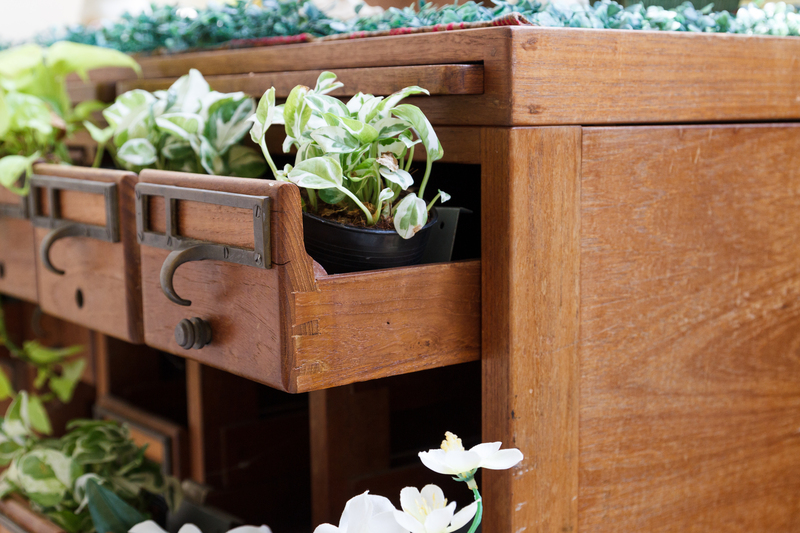10 Creative Approaches to Lowering Green Waste Impact
In a world increasingly aware of environmental challenges, reducing green waste becomes a pivotal component in achieving sustainability. Green waste comprises organic materials like grass clippings, leaves, and garden trimmings, which, if poorly managed, can exacerbate landfill issues. Here are ten innovative strategies to minimize green waste effectively.
1. Composting: Nature's Recycling System
Composting is a fundamental approach that turns organic waste into nutrient-rich soil additives. By composting at home, you not only reduce the amount of waste sent to landfills but also enrich your garden soil. To start a compost pile, collect kitchen scraps such as fruit peels, vegetable skins, and grass clippings. Remember to layer "green" materials rich in nitrogen with "brown" ones like dry leaves and twigs, providing carbon.
Benefits of Composting
- Reduces landfill space used by organic waste.
- Improves soil health and fertility.
- Lowers greenhouse gas emissions from waste decomposition.

2. Grasscycling: Mowing Smarter, Not Harder
Rather than bagging grass clippings during mowing, leave them on the lawn as part of a strategy called grasscycling. This technique allows grass to decompose naturally, returning vital nutrients to the soil and reducing green waste simultaneously.
Advantages of Grasscycling
- Reduces the need for chemical fertilizers.
- Minimizes water usage as the lawn retains moisture better.
- Decreases garden waste by an average of 20%.
3. Mulching: The Protective Layer
Mulching involves spreading organic materials on your garden's surface. This not only reduces weed growth but also retains moisture and contributes to green waste management. Use shredded leaves, wood chips, or bark as natural mulch options.
Reasons to Mulch
- Prevents soil erosion.
- Regulates soil temperature.
- Decomposes into nutrients for plants.
4. Vermicomposting: Worms at Work
Vermicomposting harnesses the power of worms to break down organic waste efficiently. Suitable for smaller spaces like apartments, this process results in rich castings, which are excellent natural fertilizers.
How Vermicomposting Benefits You
- Produces compost faster than traditional methods.
- Reduces kitchen waste significantly.
- Requires minimal space and simple setup.
5. Garden Smart: Choosing Low-Waste Plants
Design a garden with plants that generate less green waste. Opt for native species, which are adapted to your local environment, requiring less pruning and maintenance. Moreover, drought-resistant plants save water, contributing further to sustainability.
Key Points About Low-Waste Gardens
- Lowers pruning frequency, preserving energy.
- Supports local biodiversity.
- Reduces gardeners' workload.
6. Edible Landscapes: A Tasty Solution
Transform part of your garden into an edible landscape by growing fruits, vegetables, and herbs. This not only reduces green waste through better use of organic materials but also provides fresh produce for your kitchen.
Advantages of Edible Landscaping
- Decreases reliance on store-bought produce.
- Encourages healthy eating habits.
- Contributes to waste reduction by promoting food self-sufficiency.
7. Community Green Waste Programs
Participate in or initiate community green waste projects, such as local compost bins or garden waste collection services. Collaboration magnifies the positive impact beyond individual efforts and can lead to bigger changes within a community.
Impact of Community Involvement
- Enhances awareness and education about sustainable practices.
- Fosters community spirit and cooperation.
- Maximizes resource sharing for efficient waste management.
8. Donation: Sharing Excess Greenery
Donate excess garden produce or plant materials to community gardens, schools, or neighbors. Donation is a meaningful way to manage surplus and prevent green waste from entering disposal facilities.
Benefits of Donating
- Strengthens community bonds.
- Encourages shared sustainability efforts.
- Reduces potential waste accumulation at home.

9. Creative Upcycling: Reimagining Garden Waste
Embrace creativity by upcycling garden waste into decorative or functional items. Use branches to create garden fencing or tree stumps for seating arrangements, transforming potential waste into valuable assets.
Ideas for Upcycling
- Create art pieces with twigs and natural elements.
- Use leaves and petals for DIY crafts or compost.
- Design garden pathways with repurposed materials.
10. Educating and Advocating for Change
Finally, education plays a crucial role in lowering green waste impact. Advocate for green waste reduction strategies through workshops, social media, and community initiatives. Raising awareness and providing knowledge can inspire collective efforts toward sustainable living.
The Role of Education and Advocacy
- Increases understanding of environmental issues.
- Empowers others to adopt sustainable practices.
- Leads to informed decision-making and policy influence.
In conclusion, reducing the impact of green waste is an achievable goal with these creative and practical approaches. By integrating these strategies into daily habits, you can contribute significantly to environmental conservation while also benefiting your immediate surroundings. Embrace the change and be part of a greener future.